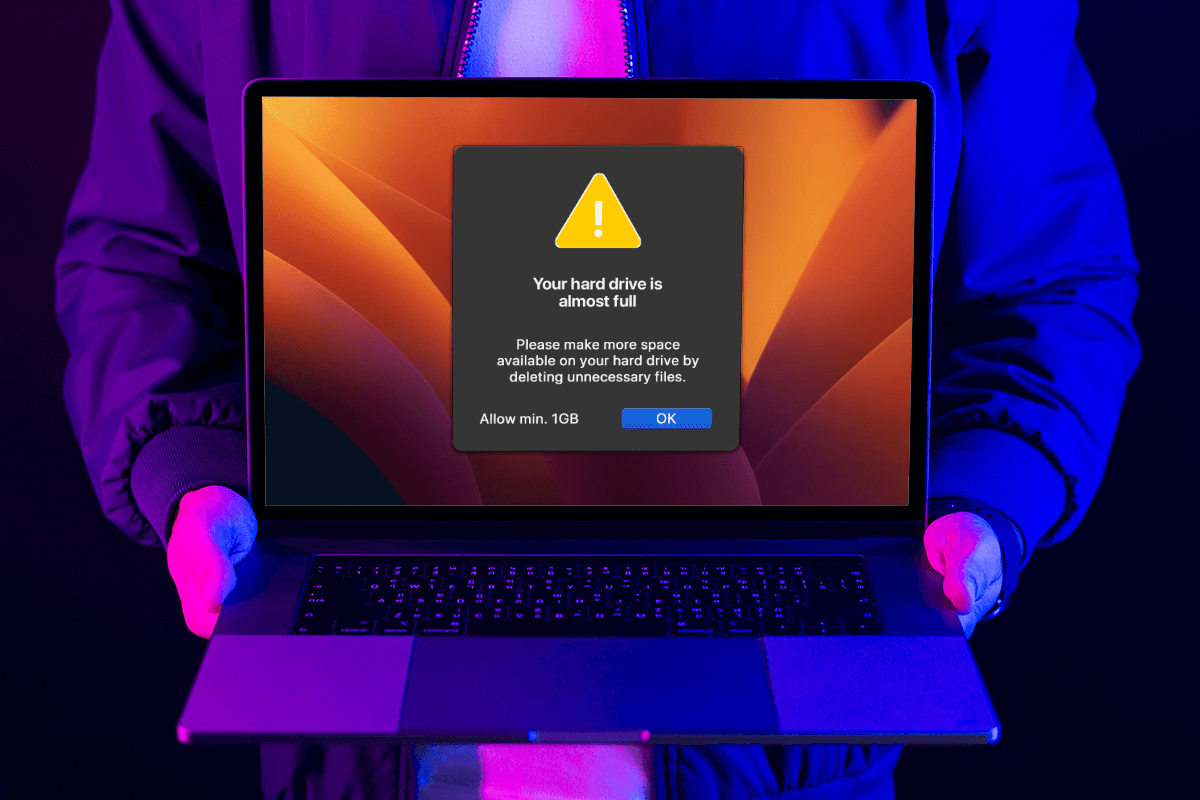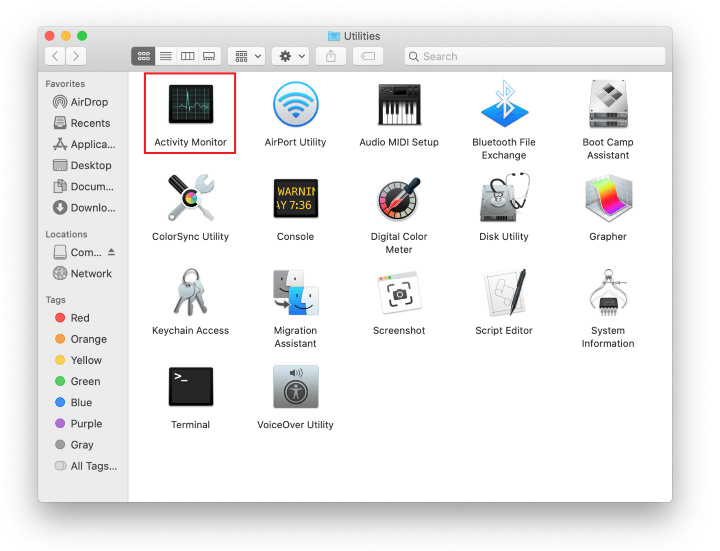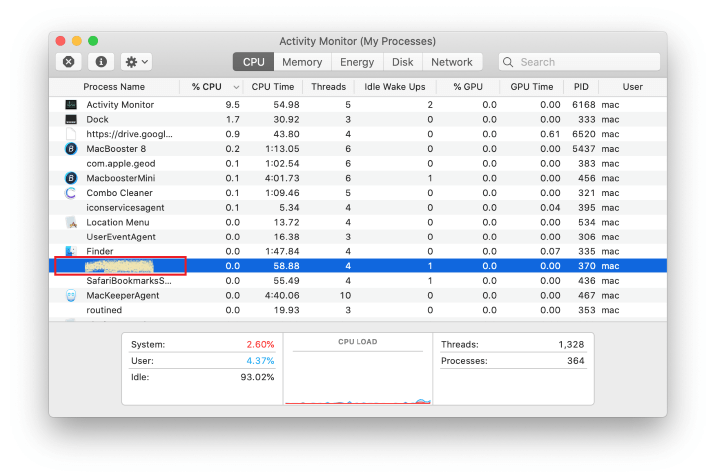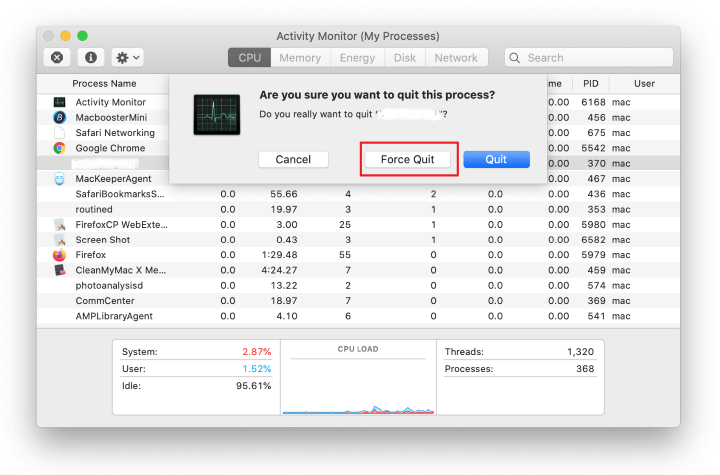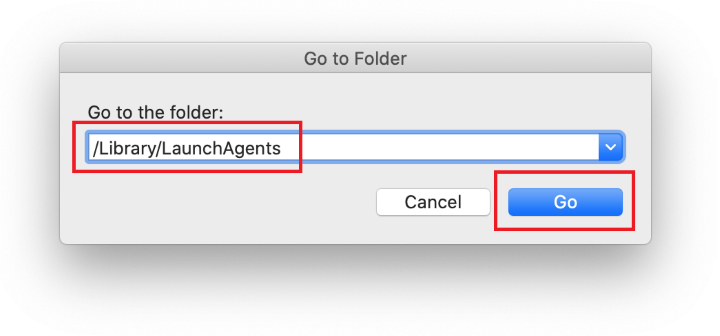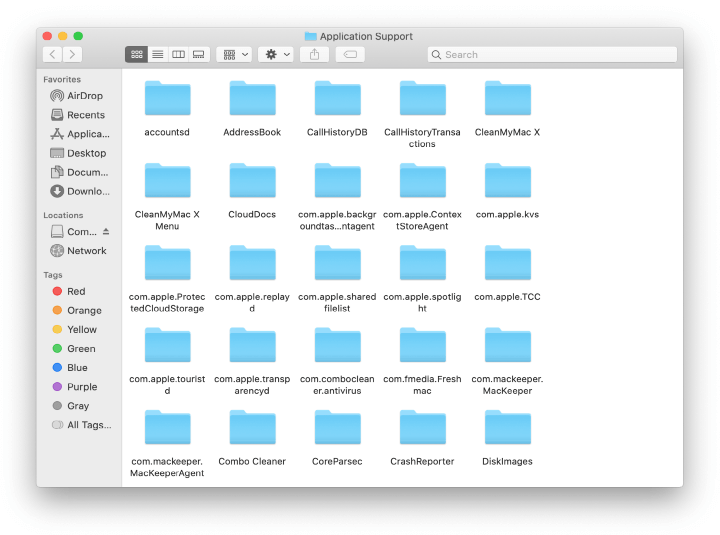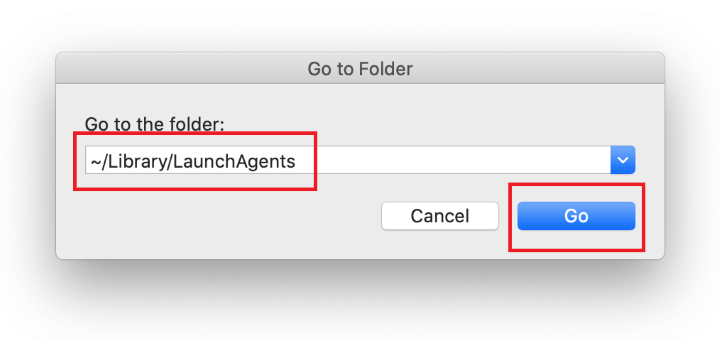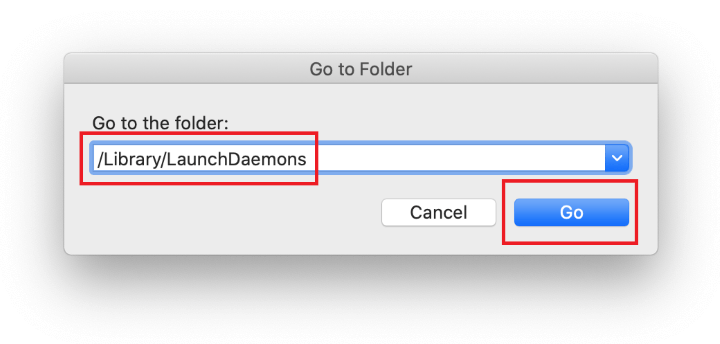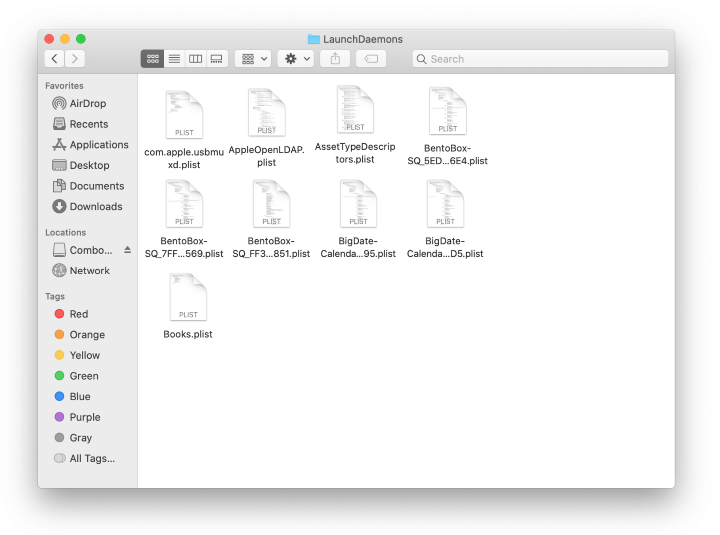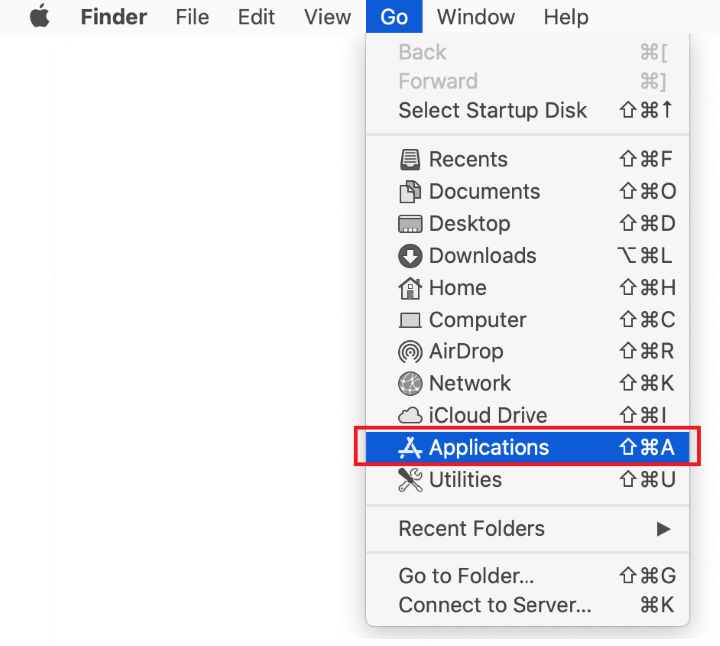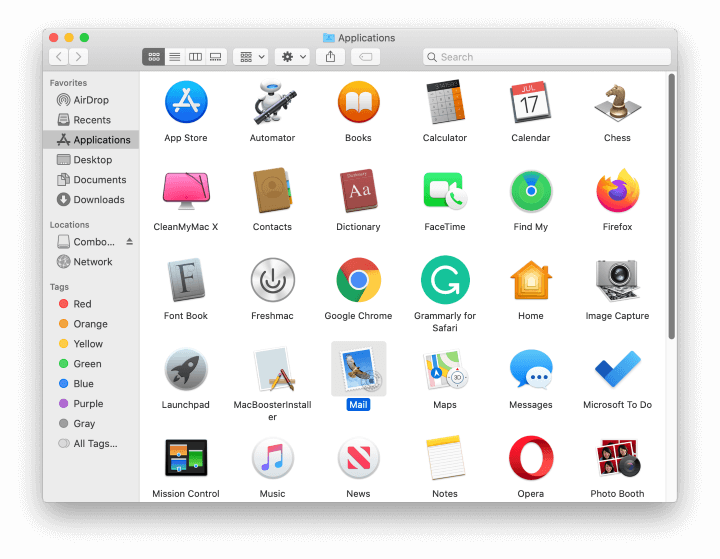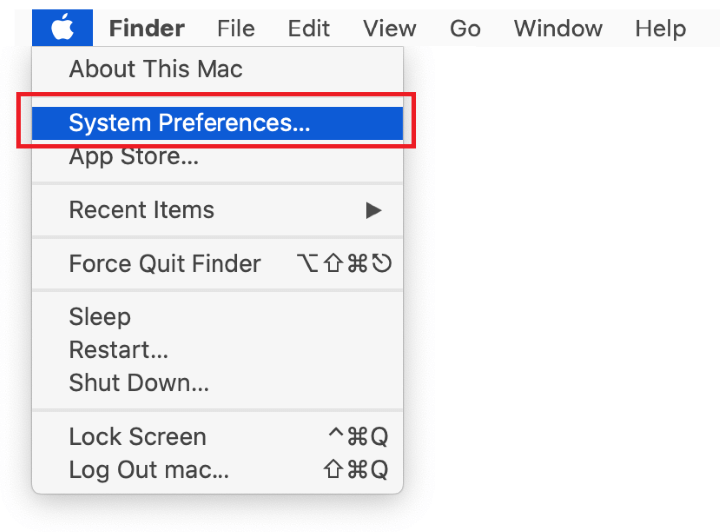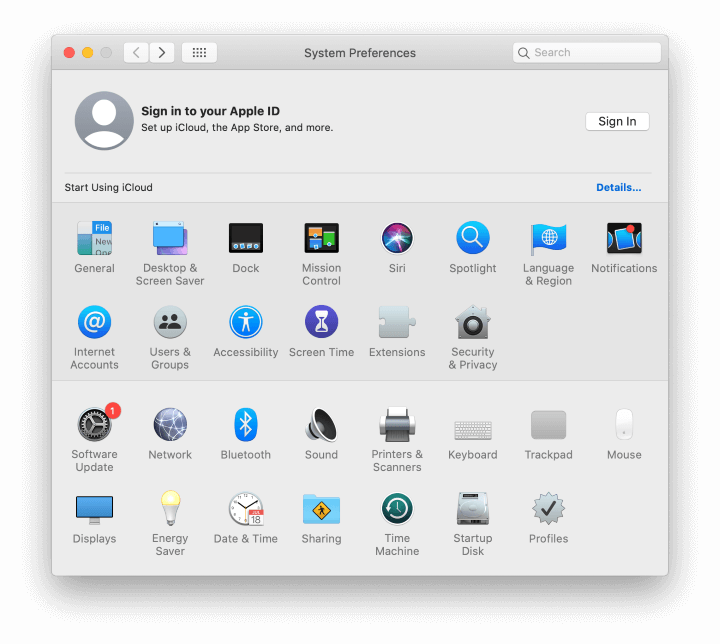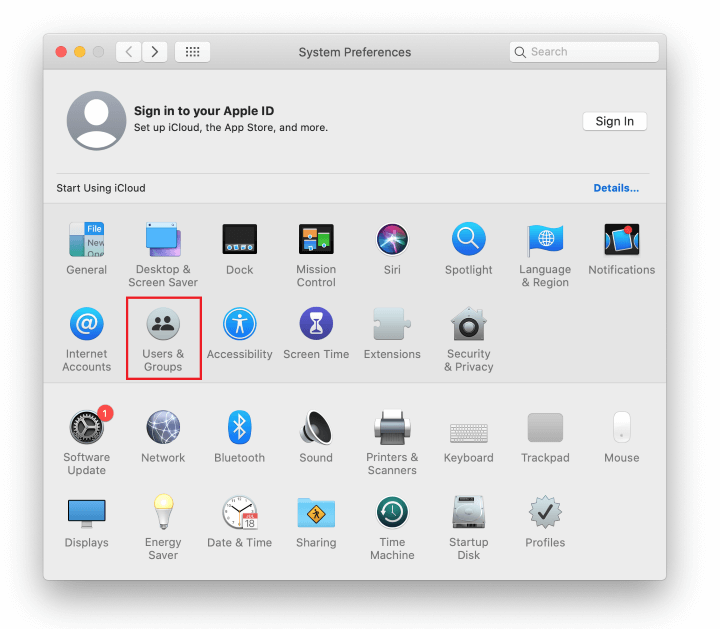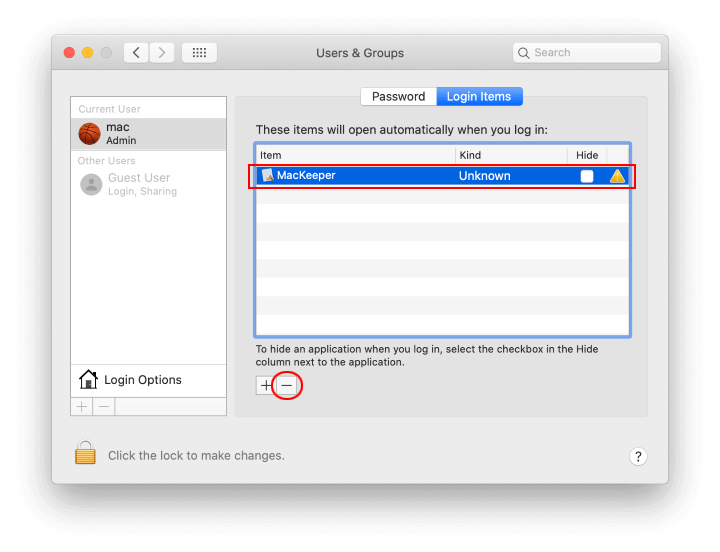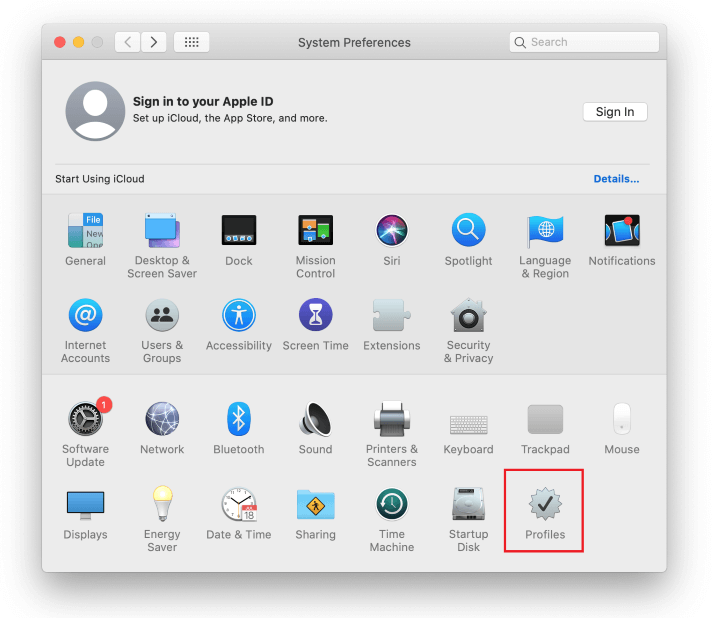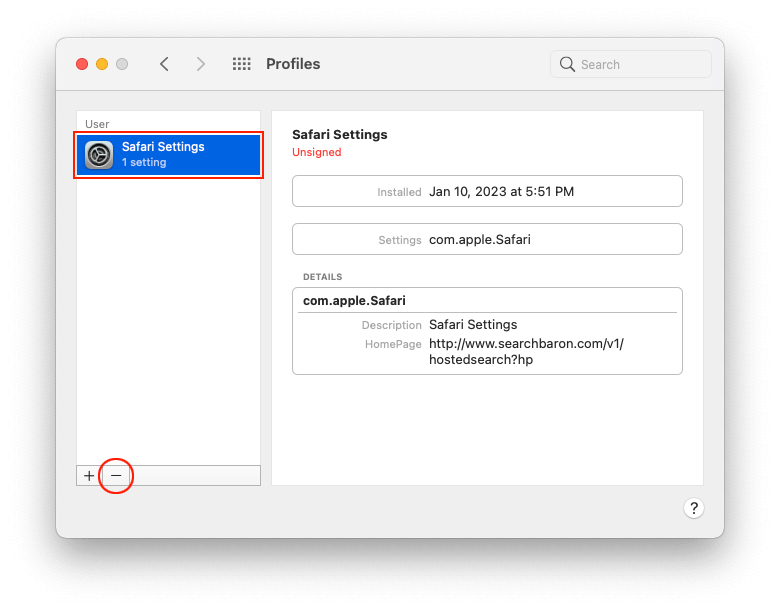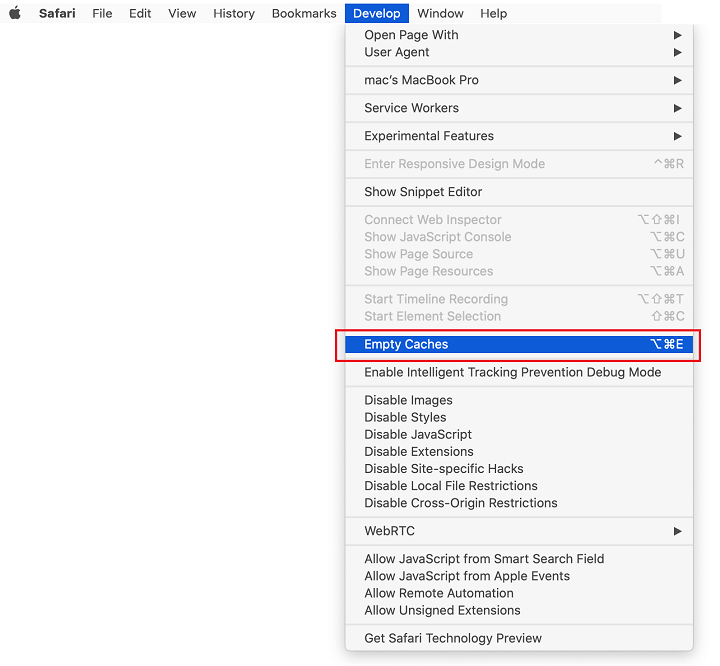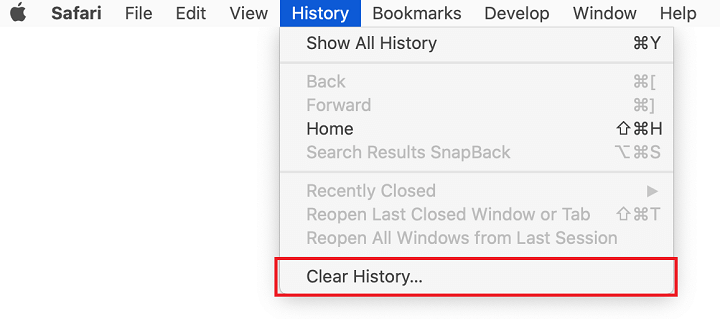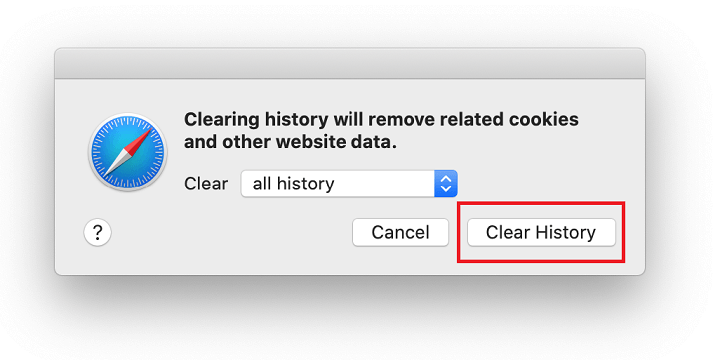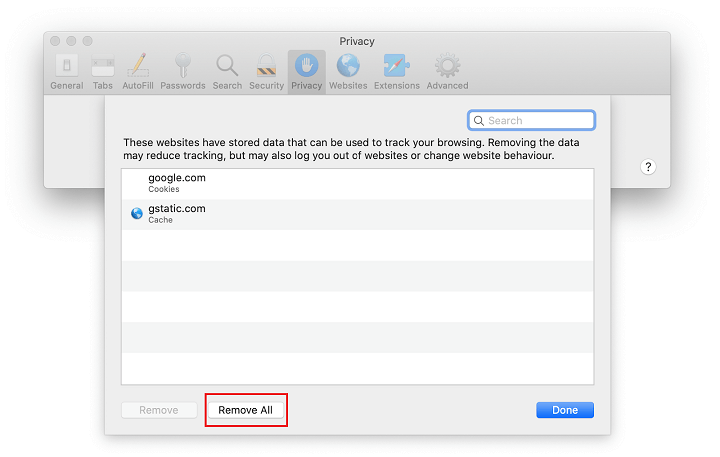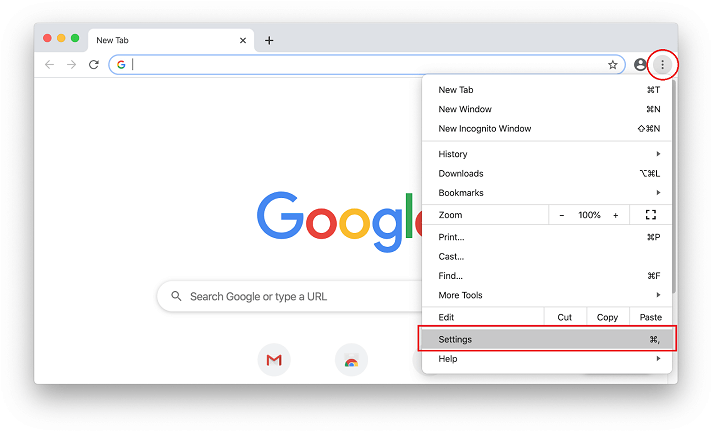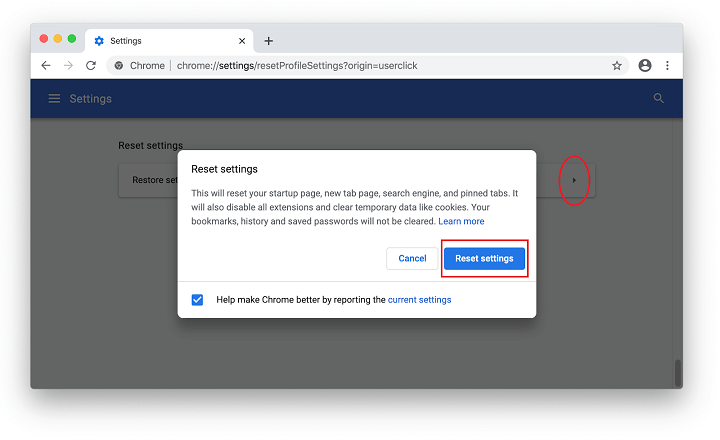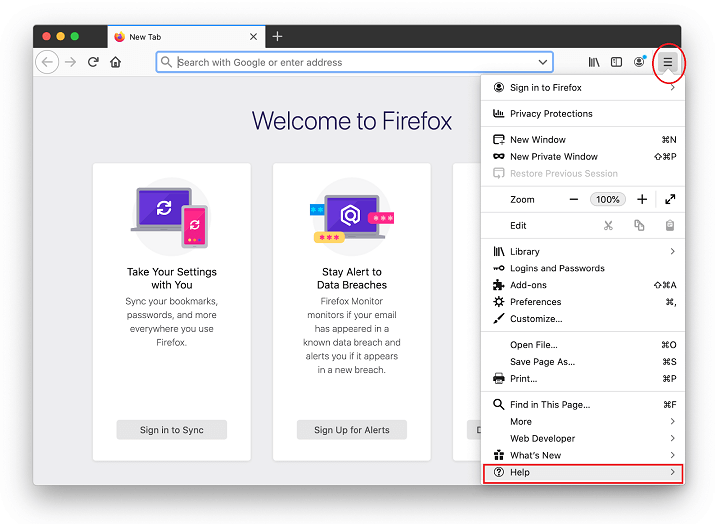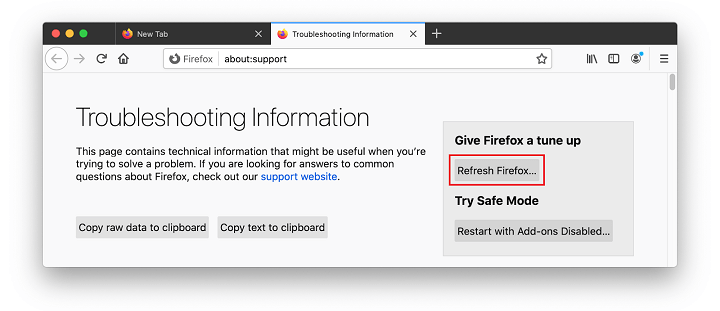Alerts that claim your hard drive is almost full may be displayed by Mac malware as a smokescreen for fraudulent permission requests to control a web browser.
What is “Your hard drive is almost full” Mac alert?
Even though a great deal of user data now resides in the cloud and the general availability of media streaming services has minimized the need to keep gigabytes of content on a Mac’s internal disk, the built-in storage still harbors more than just the operating system components and applications. Besides being home to work projects and important digital memories like personal photos as well as videos, the amount of used hard drive space tends to swell over time due to the continuous accumulation of temporary files, long-forgotten downloads, unnecessary large files, duplicates, and application leftovers such as logs and caches. Therefore, in an ideal world, a pop-up that says “Your hard drive is almost full” doesn’t seem too unusual at first blush, as it may simply be a way for macOS to let users know they are running out of disk space. Things can be slightly off the legitimate track here, though. This warning often shows up on machines infected by malware, specifically, a browser hijacker called Search Baron that makes a mess of one’s web preferences.
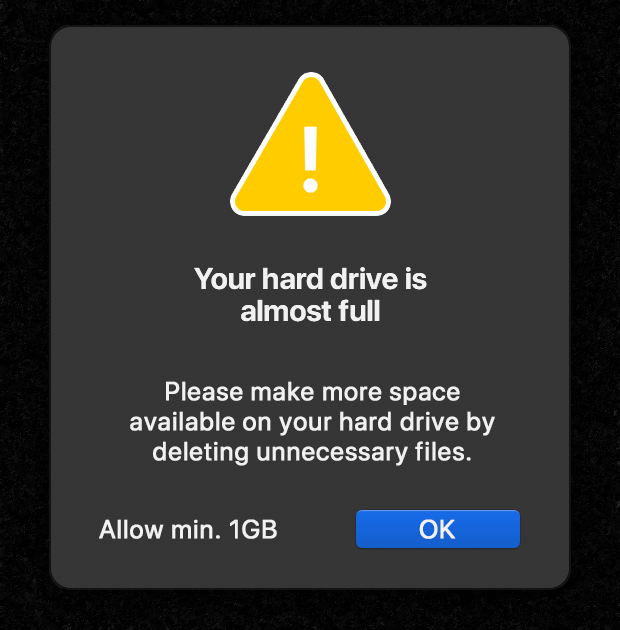
One of the common tricks used by threat actors is to camouflage something sketchy with something that conveys a call to action while feigning urgency. The goal is to deceive a user into clicking what appears to be a harmless button on an eye-catching notification, when in fact it overlays a request to allow unwarranted access to sensitive areas of the system. With that being said, let’s have a closer look at the specific scenario in question. When using Safari, Google Chrome, or Mozilla Firefox, the victim is suddenly interrupted by a pop-up containing the following message:
“Your hard drive is almost full
Please make more space available on your hard drive by deleting unnecessary files.
Allow min. 1GB”
What is the average person’s response to seeing a scary alert like this? At the very least, they will end up clicking the OK button to close the nag object and move on with their Internet session, hoping that the nuisance won’t reappear and nothing bad will ensue from this action. Those who get on the hook will get curious and anticipate a follow-up screen with recommendations on what exactly to clean. Either way, the expectations don’t meet reality. The security condition of the Mac will get worse, and there won’t be any subsequent optimization advice. Moreover, a peek into the “Storage” tab in the Apple menu’s “About This Mac” interface will reveal that the hard drive space isn’t even close to being depleted.
It turns out that the alert is an important instrument in the above-mentioned SearchBaron.com browser redirect campaign that broke out years ago and continues to have a significant footprint in the Mac threat landscape now in 2023. To do its thing, this malware needs to manage several key facets of the default web browser’s operation. These include first and foremost the preferred search engine, and secondarily, the homepage and new tab page settings. Keeping this grip is a matter of getting elevated privileges, and the warning message under scrutiny is intended for this exact purpose. An attentive user will notice a different dialog a split second before the “Your hard drive is almost full” notification pops up. It’s a permission request that goes:
“[App name] wants access to control “Safari”. Allowing control will provide access to documents and data in “Safari”, and to perform actions within that app.”
The name of the app is typically something unintelligible, for example, a long string of digits. The browser name can vary depending on which one is in the crosshairs. The trickiest part is that the OK buttons on both pop-ups overlap, which means you provide the dodgy application with all those permissions in one go by simply trying to get the visible alert out of the way. On a side note, this is precisely how another hoax in Search Baron’s repertoire works. It gives users a heads-up by repeatedly triggering the “Your computer is low on memory” warning in order to hold sway over a target browser.
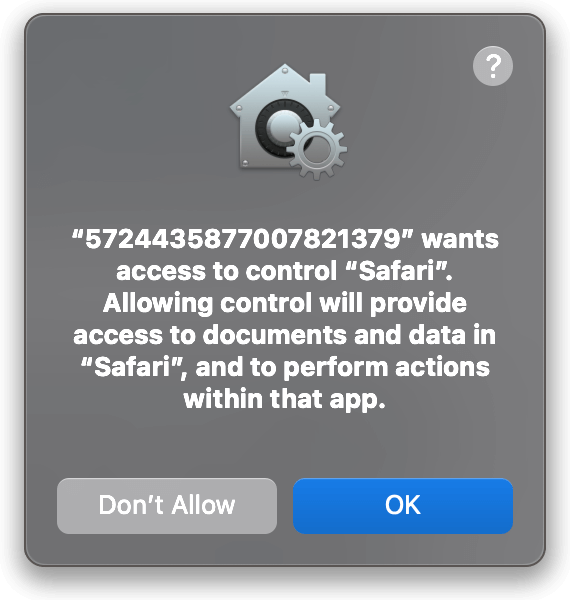
As previously mentioned, Search Baron is an old stager in the Mac malware arena. It takes over a victim’s web surfing customizations so that each online search instance follows a rogue path with the final destination at Bing.com. Its authors also employ a network of affiliated URLs that include searchmarquis.com, search1.me, nearbyme.io, chillsearch.xyz, and several more. By combining these domains in different sequences during the redirect process periodically, the crooks are able to integrate APIs of advertising networks into their plot and thereby max out the monetization of the intercepted traffic. The role of Bing in this plan is to create a false sense of normality, which discourages some victims from investigating the problem in-depth and disinfecting their systems.

Search Baron, the malicious application that displays the misleading “Your hard drive is almost full” pop-ups, mostly takes advantage of software bundling to plague Macs. This means that its junk payload tiptoes its way into a computer by hiding inside a package of several programs. Predictably, the installer of such multi-component offerings hushes up the real structure of the bundle while only mentioning harmless freeware that serves as a curtain for everything else. Having penetrated a Mac, the culprit litters around with .plist files in LaunchAgents and LaunchDaemons folders, adds an unwanted Login Items entry, modifies the default settings in the user’s preferred browser, and installs a malicious configuration profile. When it comes to the subject matter being discussed, the contamination also entails imitation of a peculiar unsatisfactory system condition serious enough to make the victim slip up and grant excessive permissions. “Your hard drive is almost full” Mac alert fits the mold of such a scare. Don’t fall for it. Instead, get busy cleaning your system from the crud that’s causing these fake warnings.
“Your hard drive is almost full” virus manual removal for Mac
The steps listed below will walk you through the removal of this malicious application. Be sure to follow the instructions in the specified order.
- Expand the Go menu in your Mac’s Finder bar and select Utilities as shown below.

- Locate the Activity Monitor icon on the Utilities screen and double-click on it.

- In the Activity Monitor app, look for a process that appears suspicious. To narrow down your search, focus on unfamiliar resource-intensive entries on the list. Keep in mind that its name isn’t necessarily related to the way the threat is manifesting itself, so you’ll need to trust your own judgement. If you pinpoint the culprit, select it and click on the Stop icon in the upper left-hand corner of the screen.

- When a follow-up dialog pops up asking if you are sure you want to quit the troublemaking process, select the Force Quit option.

- Click on the Go menu icon in the Finder again and select Go to Folder. You can as well use the Command-Shift-G keyboard shortcut.

- Type /Library/LaunchAgents in the folder search dialog and click on the Go button.

- Examine the contents of the LaunchAgents folder for dubious-looking items. Be advised that the names of files spawned by malware may give no clear clues that they are malicious, so you should look for recently added entities that appear to deviate from the norm.
As an illustration, here are several examples of LaunchAgents related to mainstream Mac infections: com.updater.mcy.plist, com.avickUpd.plist, and com.msp.agent.plist. If you spot files that don’t belong on the list, go ahead and drag them to the Trash.

- Use the Go to Folder lookup feature again to navigate to the folder named ~/Library/Application Support (note the tilde symbol prepended to the path).

- When the Application Support directory is opened, identify recently generated suspicious folders in it and send them to the Trash. A quick tip is to look for items whose names have nothing to do with Apple products or apps you knowingly installed. A few examples of known-malicious folder names are com.AuraSearchDaemon, ProgressSite and IdeaShared.

- Enter ~/Library/LaunchAgents string (don’t forget to include the tilde character) in the Go to Folder search area.

- TThe system will display LaunchAgents residing in the current user’s Home directory. Look for the following dodgy items related to “Your hard drive is almost full” pop-up virus: com.ConnectionCache.service.plist, com.digitalprotection.emcupdater.plist, com.mulkey.plist, com.nbp.plist, and com.sys.system.plist. Drag these files to the Trash.

- Type /Library/LaunchDaemons in the Go to Folder search field.

- In the LaunchDaemons path, try to pinpoint the files the malware is using for persistence. Several examples of the items cropped by this Mac infection are com.ConnectionCache.system.plist and com.mulkeyd.plist. Delete the sketchy files immediately.

- Click on the Go menu icon in your Mac’s Finder and select Applications on the list.

- Find the app that clearly doesn’t belong there and move it to the Trash. If this action requires your admin password for confirmation, go ahead and enter it.

- Expand the Apple menu and select System Preferences.


- Proceed to Users & Groups and click on the Login Items tab.
The system will display the list of items launched when the computer is starting up. Locate the potentially unwanted app there and click on the “-” (minus) button.

- Now select Profiles under System Preferences. Look for a malicious item in the left-hand sidebar. Several examples of configuration profiles created by Mac adware include AdminPrefs, TechSignalSearch, MainSearchPlatform, and Safari Preferences. Select the offending entity and click on the minus sign at the bottom to eliminate it.

If your Mac has been infiltrated by adware, the infection will most likely continue to hold sway over your default web browser even after you remove the underlying application along with its components sprinkled around the system. Use the browser cleanup instructions below to address the remaining consequences of this attack.
Get rid of “Your hard drive is almost full” pop-up in web browser on Mac
To begin with, the web browser settings taken over by Search Baron should be restored to their default values. Although this will clear most of your customizations, web surfing history, and all temporary data stored by websites, the malicious interference should be terminated likewise. The overview of the steps for completing this procedure is as follows:
- Remove “Your hard drive is almost full” virus in Safari
- Open the browser and go to Safari menu. Select Preferences in the drop-down list.

- Once the Preferences screen appears, click on the Advanced tab and enable the option saying “Show Develop menu in menu bar”.

- Now that the Develop entry has been added to the Safari menu, expand it and click on Empty Caches.

- Now select History in the Safari menu and click on Clear History in the drop-down list.

- Safari will display a dialog asking you to specify the period of time this action will apply to. Select all history to ensure a maximum effect. Click on the Clear History button to confirm and exit.

- Go back to the Safari Preferences and hit the Privacy tab at the top. Find the option that says Manage Website Data and click on it.

- The browser will display a follow-up screen listing the websites that have stored data about your Internet activities. This dialog additionally includes a brief description of what the removal does: you may be logged out of some services and encounter other changes of website behavior after the procedure. If you’re okay with that, go ahead and click on the Remove All button.

- Restart Safari
- Open the browser and go to Safari menu. Select Preferences in the drop-down list.
- Remove “Your hard drive is almost full” pop-up in Google Chrome
- Open Chrome, click the Customize and control Google Chrome (⁝) icon in the top right-hand part of the window, and select Settings in the drop-down

- When on the Settings pane, select Advanced
- Scroll down to the Reset settings section.

- Confirm the Chrome reset on a dialog that will pop up. When the procedure is completed, relaunch the browser and check it for malware activity.

- Open Chrome, click the Customize and control Google Chrome (⁝) icon in the top right-hand part of the window, and select Settings in the drop-down
- Remove “Your hard drive is almost full” virus in Mozilla Firefox
- Open Firefox and go to Help – Troubleshooting Information (or type about:support in the URL bar and press Enter).


- When on the Troubleshooting Information screen, click on the Refresh Firefox button.

- Confirm the intended changes and restart Firefox.
- Open Firefox and go to Help – Troubleshooting Information (or type about:support in the URL bar and press Enter).
Get rid of “Your hard drive is almost full” pop-up virus using Combo Cleaner removal tool
The Mac maintenance and security app called Combo Cleaner is a one-stop tool to detect and remove “Your hard drive is almost full” pop-up virus. This technique has substantial benefits over manual cleanup, because the utility gets hourly virus definition updates and can accurately spot even the newest Mac infections.
Furthermore, the automatic solution will find the core files of the malware deep down the system structure, which might otherwise be a challenge to locate. Here’s a walkthrough to sort out the “Your hard drive is almost full” pop-up issue using Combo Cleaner:
- Download Combo Cleaner installer. When done, double-click the combocleaner.dmg file and follow the prompts to install the tool onto your Mac.
By downloading any applications recommended on this website you agree to our Terms and Conditions and Privacy Policy. The free scanner checks whether your Mac is infected. To get rid of malware, you need to purchase the Premium version of Combo Cleaner.
- Open the app from your Launchpad and let it run an update of the malware signature database to make sure it can identify the latest threats.
- Click the Start Combo Scan button to check your Mac for malicious activity as well as performance issues.

- Examine the scan results. If the report says “No Threats”, then you are on the right track with the manual cleaning and can safely proceed to tidy up the web browser that may continue to act up due to the after-effects of the malware attack (see instructions above).

- In case Combo Cleaner has detected malicious code, click the Remove Selected Items button and have the utility remove “Your hard drive is almost full” pop-up threat along with any other viruses, PUPs (potentially unwanted programs), or junk files that don’t belong on your Mac.

- Once you have made doubly sure that the malicious app is uninstalled, the browser-level troubleshooting might still be on your to-do list. If your preferred browser is affected, resort to the previous section of this tutorial to revert to hassle-free web surfing.
